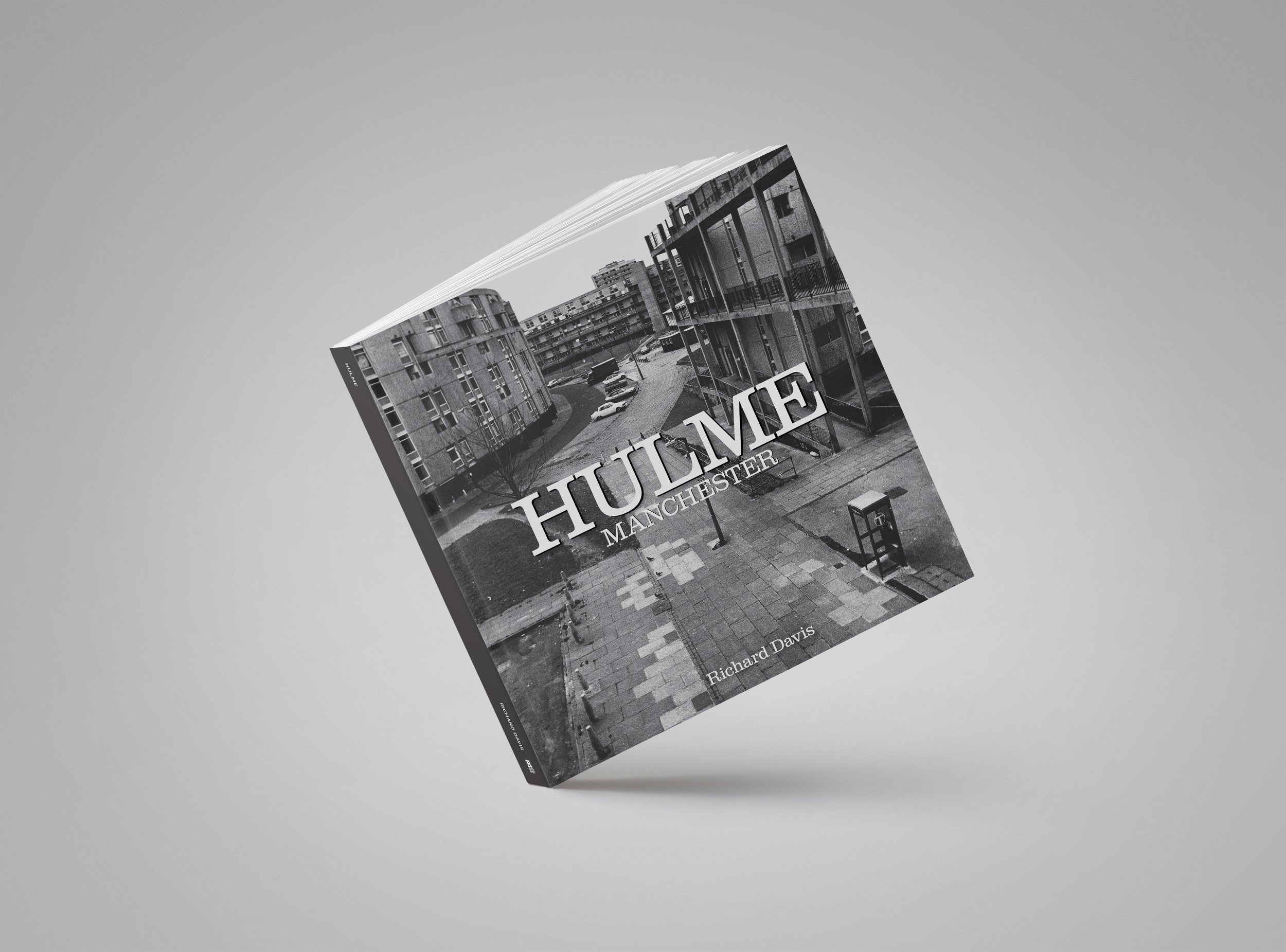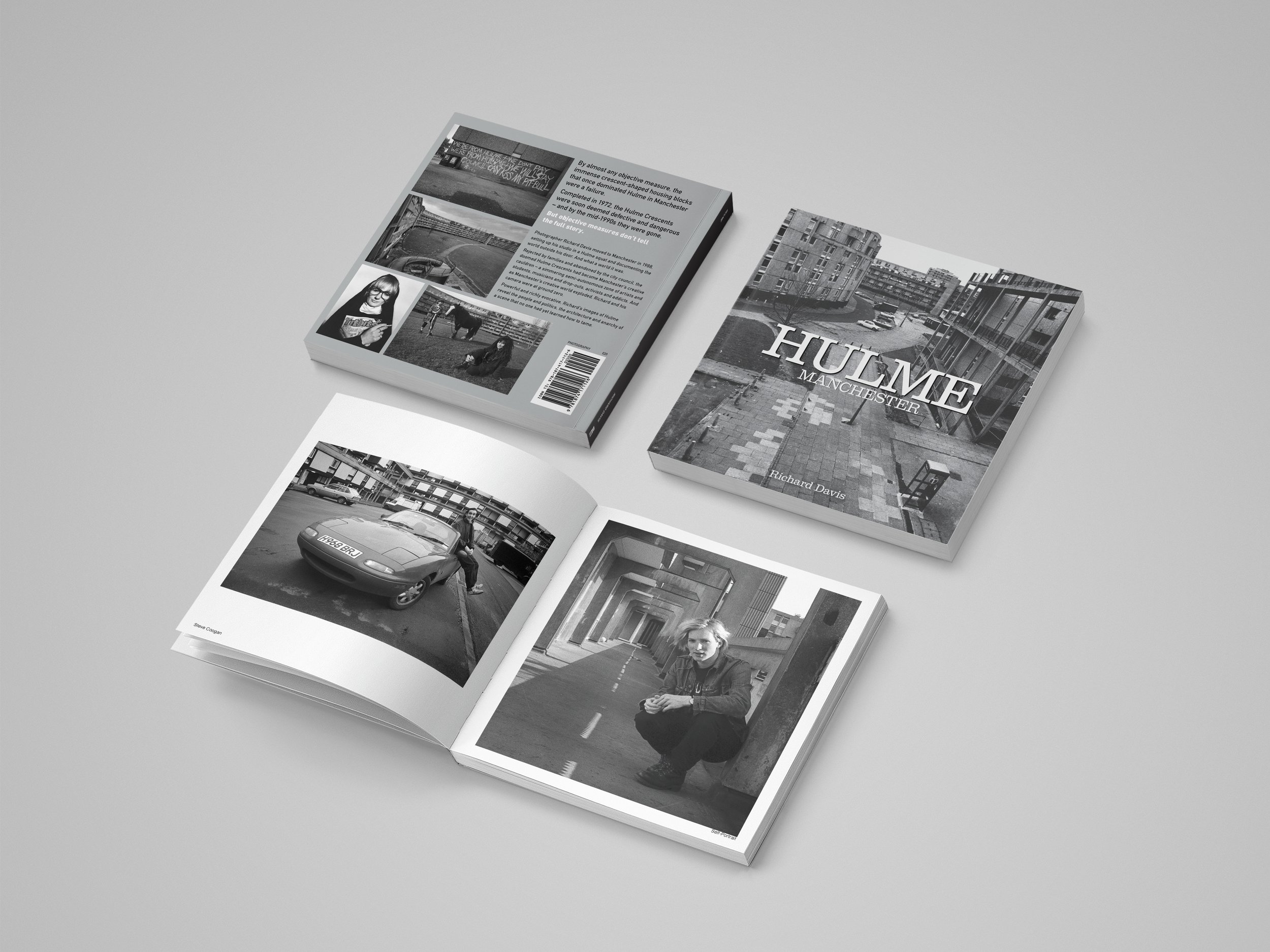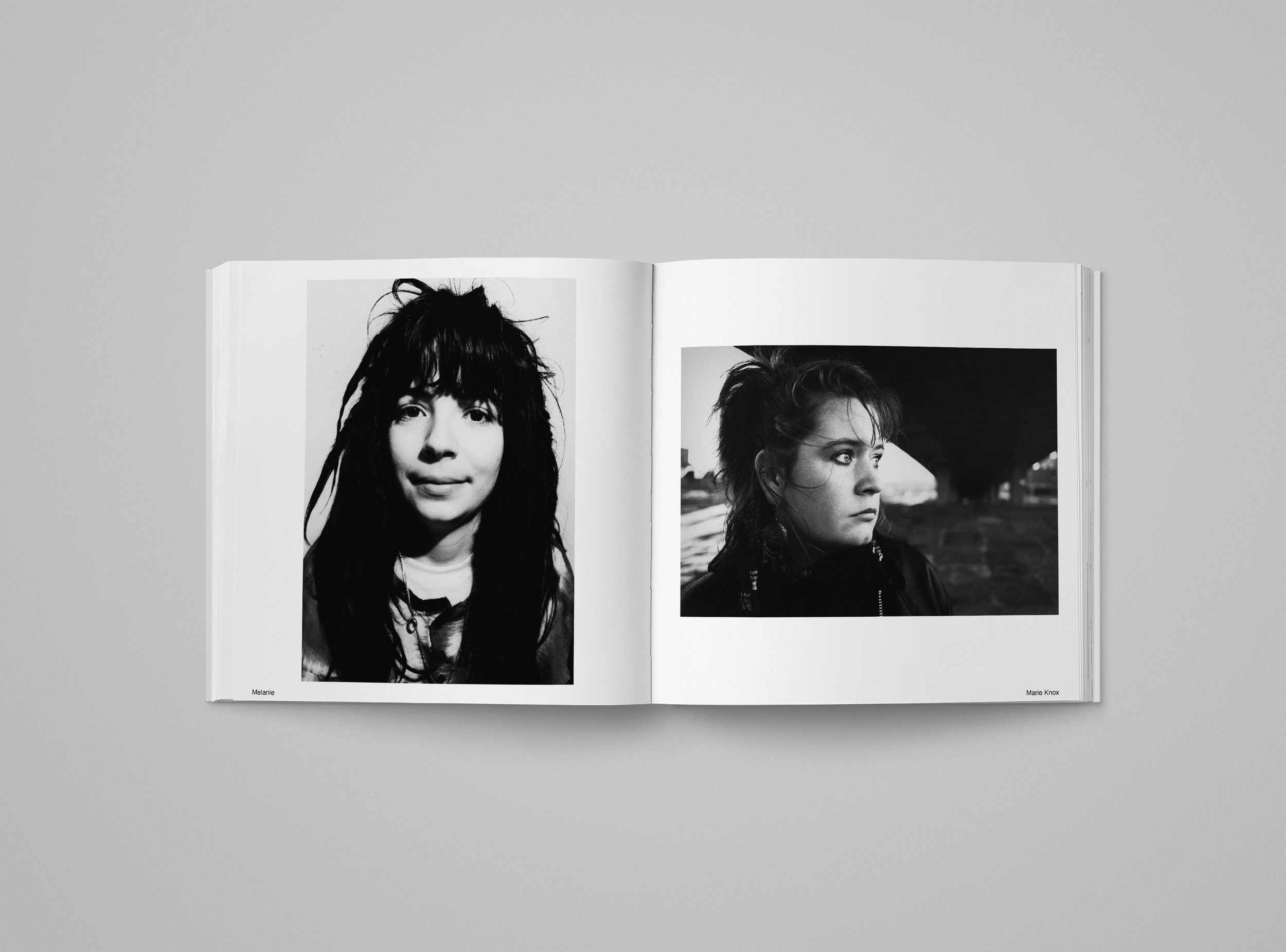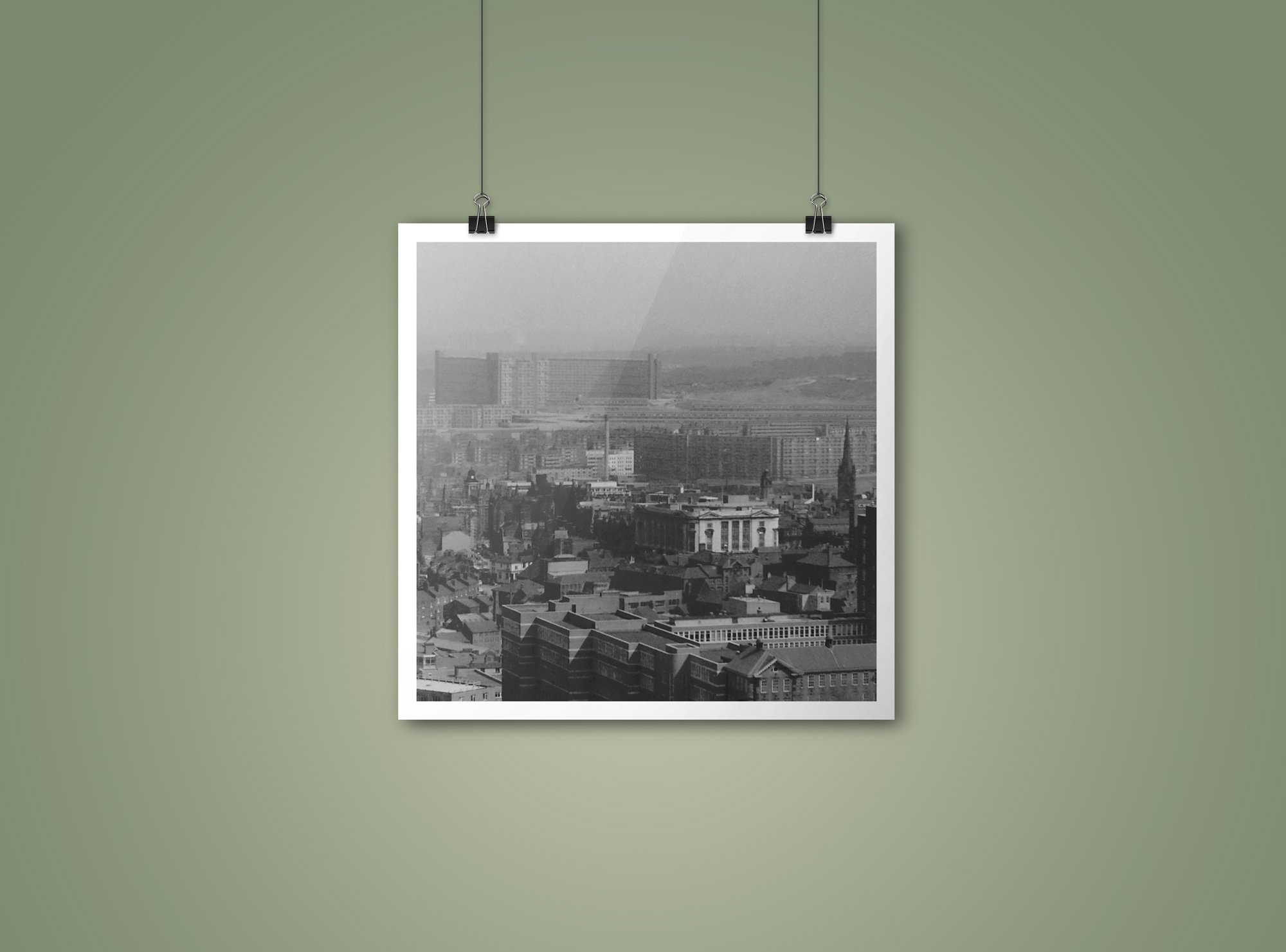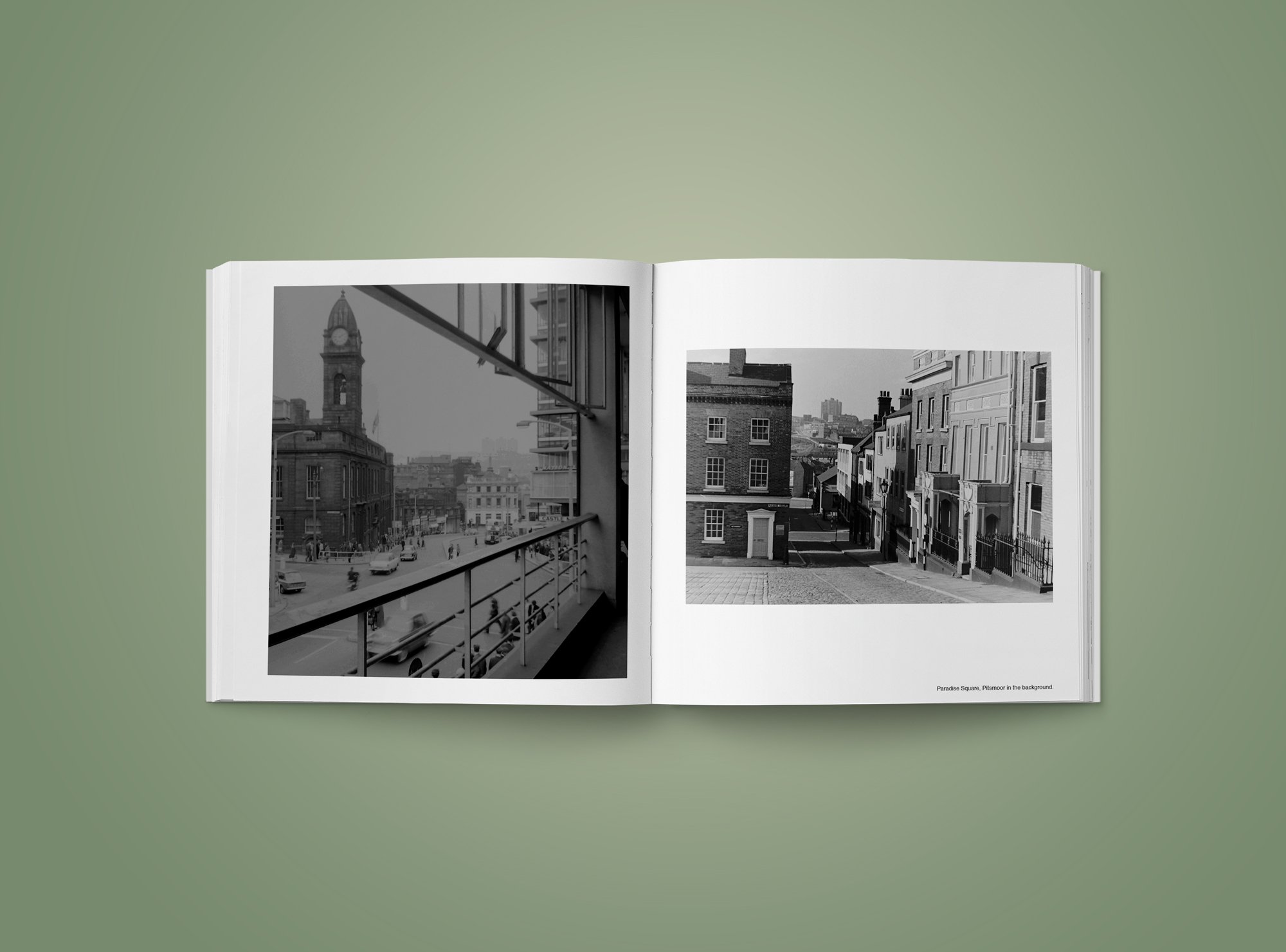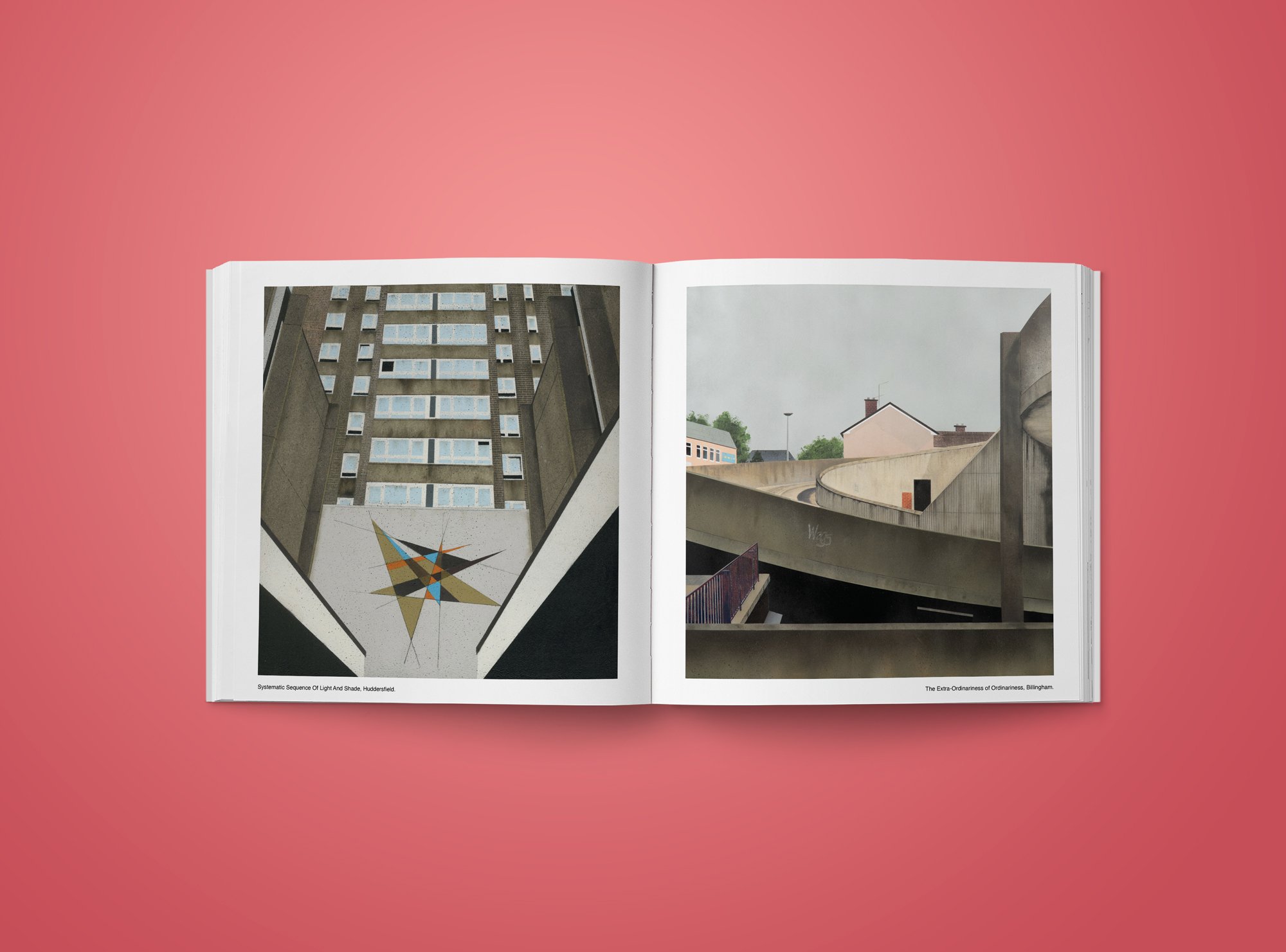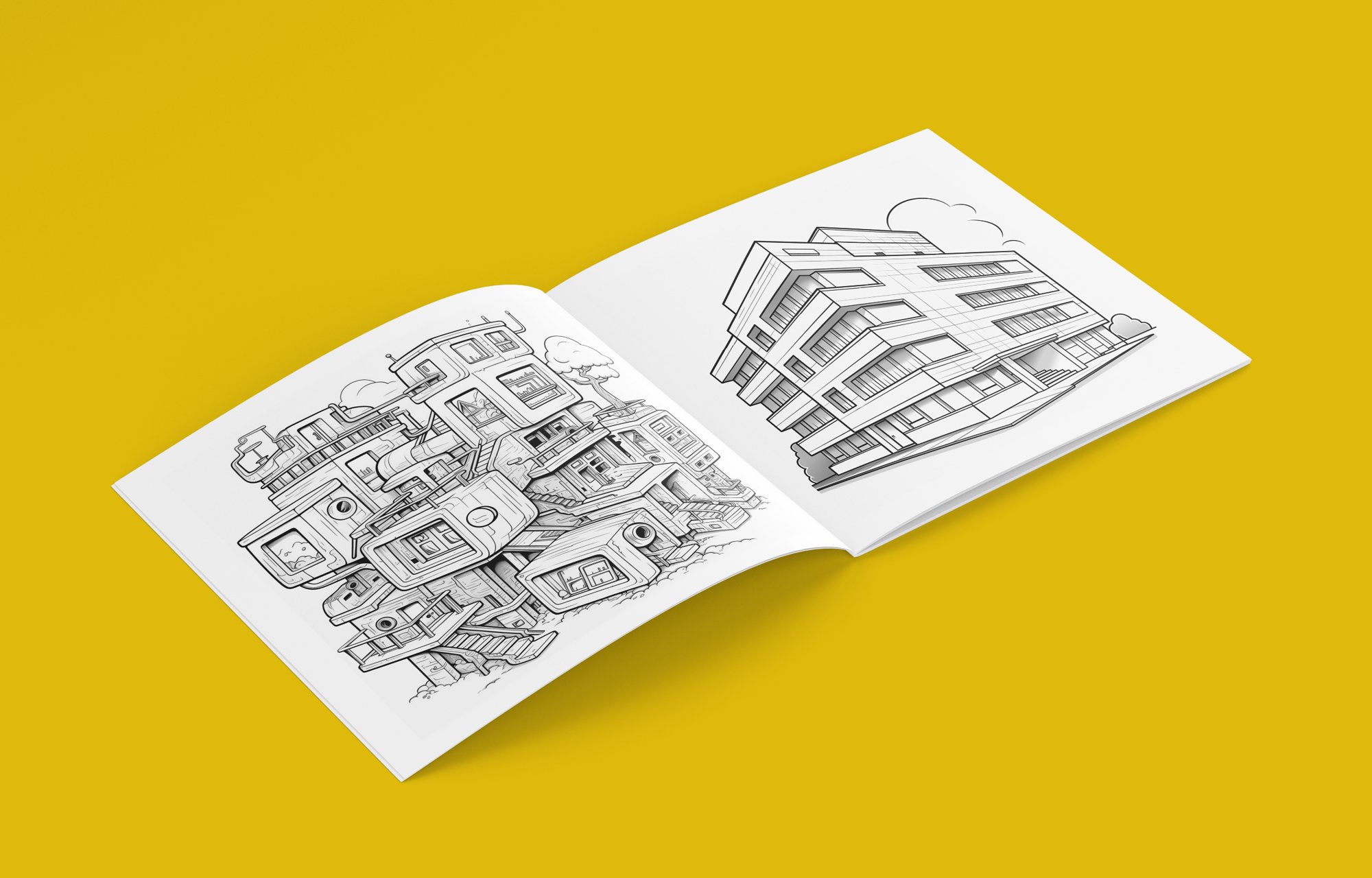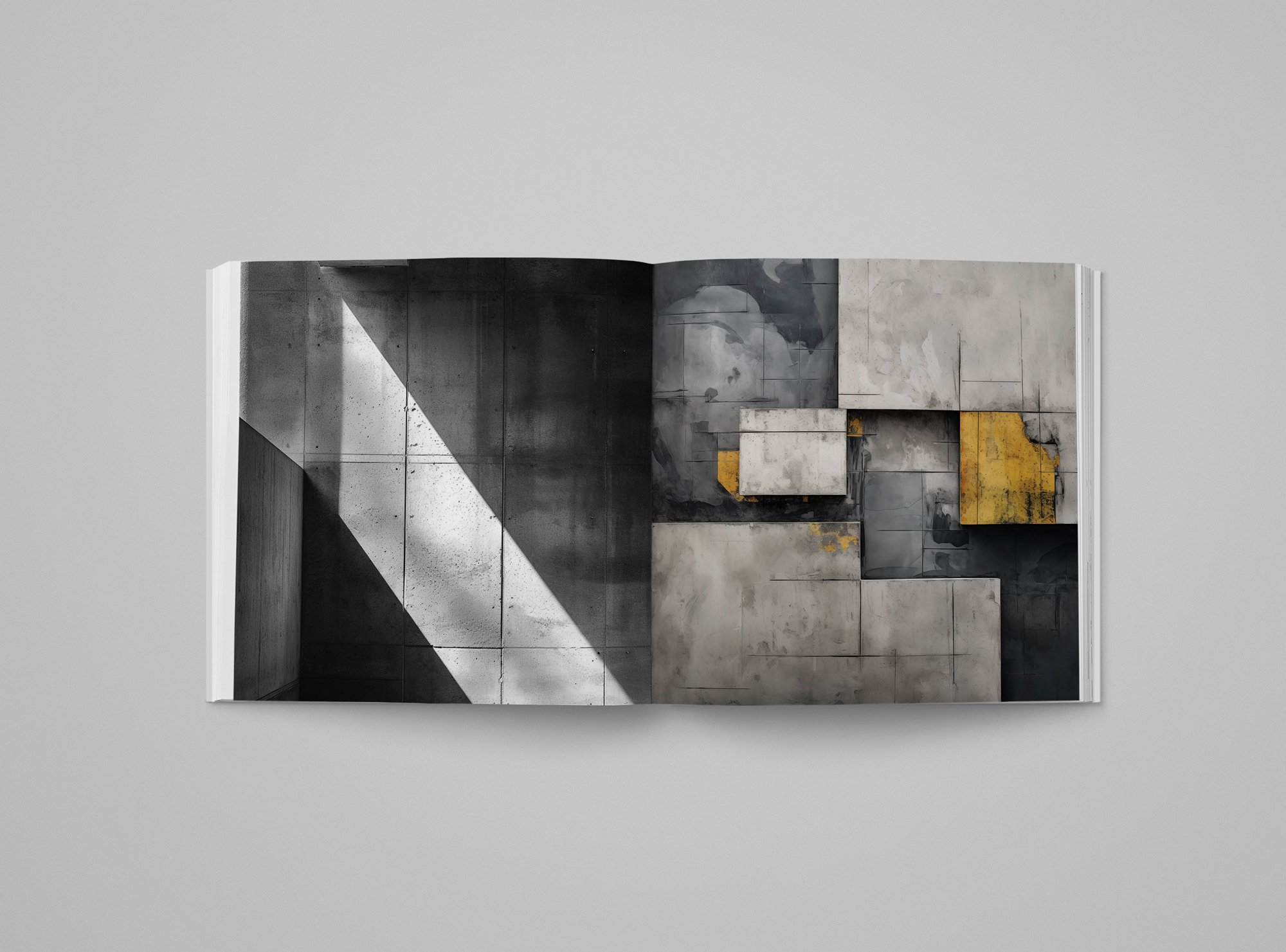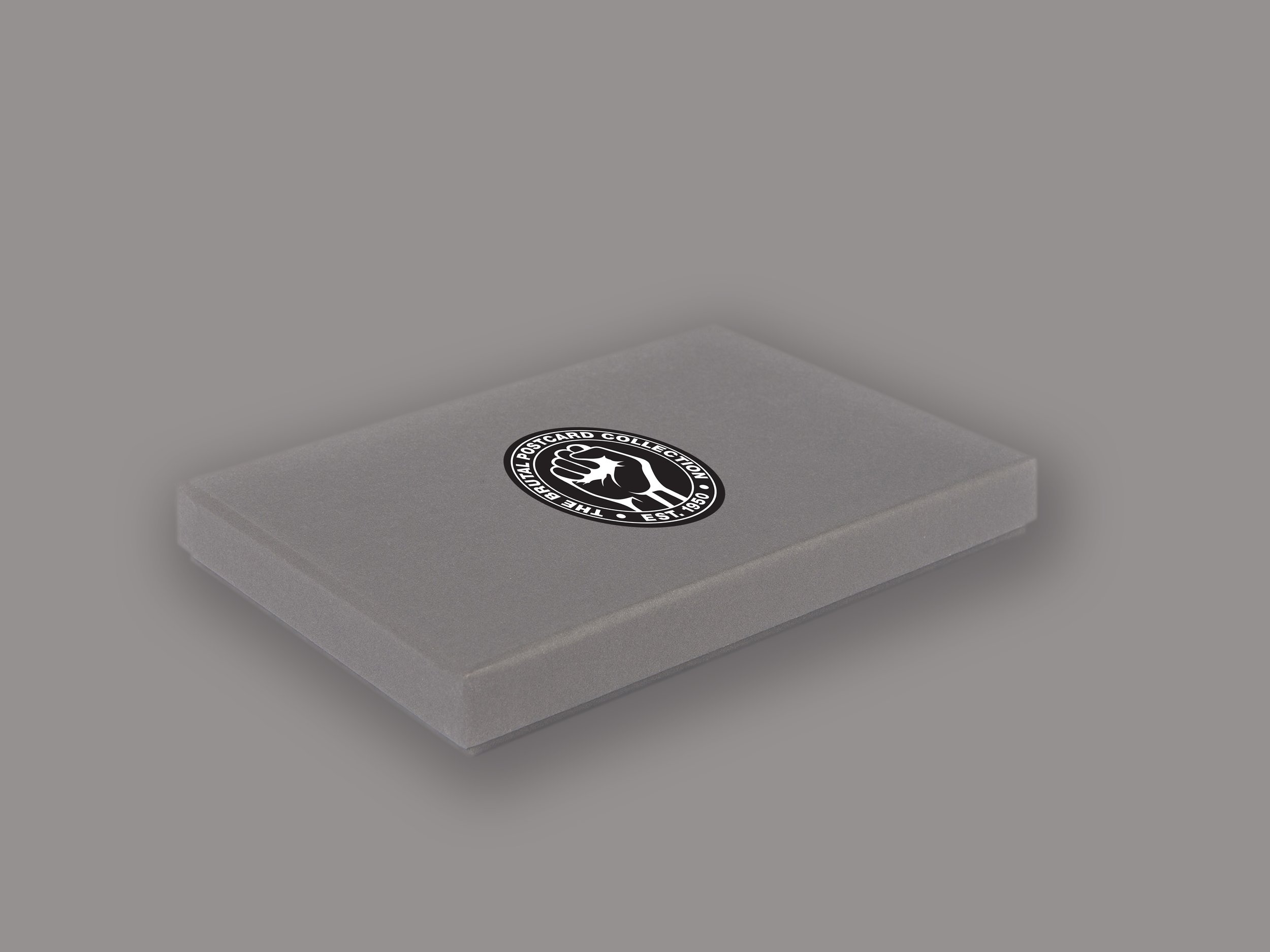Hulme (Manchester) By Richard Davis
The first 300 orders get an exclusive free 8” matte print.
Shipping Now
About The Book
Softcover, 100 pages, 90 Photographs, 210mm x 210mm
Foreword By Mark Hoyle
ISBN - 978-1-874171-12-6
Barcode - 9781874171126
By almost any objective measure, the immense crescent-shaped housing blocks that once dominated Hulme in Manchester were a failure.
Completed in 1972, the Hulme Crescents were soon deemed defective and dangerous – and by the mid-1990s they were gone.
But objective measures don’t tell the full story.
Photographer Richard Davis moved to Manchester in 1988, setting up his studio in a Hulme squat and documenting the world outside his door. And what a world it was.
Rejected by families and abandoned by the city council, the doomed Hulme Crescents had become Manchester’s creative cauldron – a simmering semi-autonomous zone of artists and students, musicians and drop-outs, activists and addicts. And as Manchester’s creative world exploded, Richard and his camera were at ground zero.
Powerful and richly evocative, Richard’s images of Hulme reveal the people and politics, the architecture and anarchy of a scene that no one had yet learned how to tame.
The first 300 orders get an exclusive free 8” matte print.
Shipping Now
About The Book
Softcover, 100 pages, 90 Photographs, 210mm x 210mm
Foreword By Mark Hoyle
ISBN - 978-1-874171-12-6
Barcode - 9781874171126
By almost any objective measure, the immense crescent-shaped housing blocks that once dominated Hulme in Manchester were a failure.
Completed in 1972, the Hulme Crescents were soon deemed defective and dangerous – and by the mid-1990s they were gone.
But objective measures don’t tell the full story.
Photographer Richard Davis moved to Manchester in 1988, setting up his studio in a Hulme squat and documenting the world outside his door. And what a world it was.
Rejected by families and abandoned by the city council, the doomed Hulme Crescents had become Manchester’s creative cauldron – a simmering semi-autonomous zone of artists and students, musicians and drop-outs, activists and addicts. And as Manchester’s creative world exploded, Richard and his camera were at ground zero.
Powerful and richly evocative, Richard’s images of Hulme reveal the people and politics, the architecture and anarchy of a scene that no one had yet learned how to tame.

The first 300 orders get an exclusive free 8” matte print.
Shipping Now
About The Book
Softcover, 100 pages, 90 Photographs, 210mm x 210mm
Foreword By Mark Hoyle
ISBN - 978-1-874171-12-6
Barcode - 9781874171126
By almost any objective measure, the immense crescent-shaped housing blocks that once dominated Hulme in Manchester were a failure.
Completed in 1972, the Hulme Crescents were soon deemed defective and dangerous – and by the mid-1990s they were gone.
But objective measures don’t tell the full story.
Photographer Richard Davis moved to Manchester in 1988, setting up his studio in a Hulme squat and documenting the world outside his door. And what a world it was.
Rejected by families and abandoned by the city council, the doomed Hulme Crescents had become Manchester’s creative cauldron – a simmering semi-autonomous zone of artists and students, musicians and drop-outs, activists and addicts. And as Manchester’s creative world exploded, Richard and his camera were at ground zero.
Powerful and richly evocative, Richard’s images of Hulme reveal the people and politics, the architecture and anarchy of a scene that no one had yet learned how to tame.



